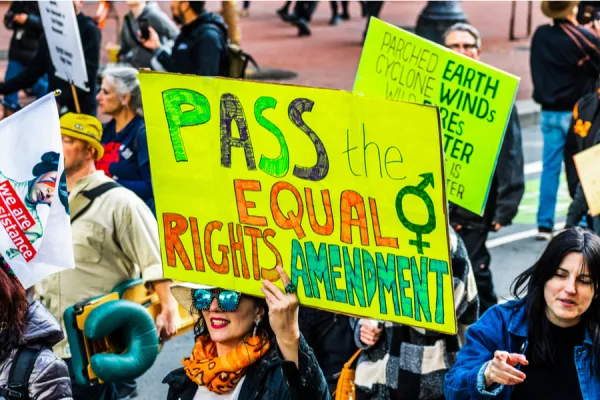
St. Louis, Mo., Jul 18, 2019 / 03:01 am (CNA).- With a law banning abortions after roughly eight weeks of pregnancy and one remaining abortion clinic whose licensure is being debated in court, Missouri has been described as a state “hostile” to abortion.
“The state makes it extremely hostile for an abortion facility to remain open,” Ushma Upadhyay, a professor of obstetrics and gynecology at the University of California San Francisco, told Vox for a story on the last abortion clinic in the state.
While the state may be increasingly restricting abortions, it has numerous programs that provide a wealth of resources and support to thousands of women in need each year who find themselves unexpectedly pregnant, pro-life advocates told CNA.
“Our aim is for those moms who want to give life to their baby, we provide them with all sorts of alternatives (to abortion),” Michael Meehan, Executive Director of Good Shepherd Children and Family Services in St. Louis, told CNA.
Good Shepherd is one of eight agencies operated through Catholic Charities in St. Louis that are available to pregnant women in need, and provide them with a variety of resources and support, including housing, education classes and scholarships, counseling, and substance abuse recovery.
Good Shepherd itself has a maternity shelter and transitional living program for teen and young adult moms, who may otherwise be homeless, that can accommodate 14 mom and 20 babies, for just a few days or up to a year or longer, depending on the needs of the moms and children, Meehan said.
Besides group and individual counseling, on-staff nurses, and classes on life skills, parenting, and child development, completing a high school education is a requirement for moms in the program, Meehan told CNA.
“That’s a mandatory part of being here is re-engaging in your education. It opens and closes the single biggest bunch of doors for independence,” Meehan said. Thus, Good Shepherd has a full-time education advocate who is a certified teacher, and helps any mom who has not yet completed high school or gotten her GED.
There is also a home visitation program for women who have housing but need other kinds of support throughout their pregnancy, Meehan said. Good Shepherd provides those women with case management, crisis management for problems such as domestic violence, connection to good health care, and referrals to additional needed resources.
And because abuse and neglect prevention is a core part of Good Shepherd’s program, they can continue providing support through home visits until the youngest child in the home is three years old, he added.
“We want to ensure that moms and babies get the best possible start in life,” Meehan said.
They also have foster care and adoption services for women who feel that they are unable to parent their child but still want to provide a better life for them, Meehan said.
“We’re hopeful that we can get the word out that adoption is an option for women who might otherwise consider abortion,” he said.
When asked if he had noticed an increase in women seeking services from Good Shepherd in light of there being one remaining abortion clinic in the state, Meehan said that they have noticed an increase, but that they are unsure whether it is directly connected to the closing abortion clinics.
According to data from 2005 from the Guttmacher Institute, a pro-choice organization, the top three reasons that women seek abortions are: having a child would interfere with education, work or ability to care for dependents (74%); that she could not afford a baby now (73%); and that she did not want to be a single mother or was having relationship problems (48%).
Knowing these statistics, Meehand said that it is Good Shepherd’s goal to help women remove as many of these obstacles as possible so that they can keep their babies.
“We are about removing perceived obstacles,” he said, “which typically isn’t a baby. It’s a violent relationship, it’s pending homelessness, it’s deep and desperate poverty, it’s a perception that this is impossible, I’m just not going to be able to do it, the baby would be better off not being brought into the world.”
In recent years, Meehan said, Good Shepherd has done even more work to “get the word out” about their services so that women know what resources are available to them.
“The message is that the Church wants to control women, the Church doesn’t care about women, the Church only cares about women until they’re born and then couldn’t care less,” Meehan said. Those messages are easily proved false, he said, “if anybody bothered to look a smidge more deeply.”
And it’s not just the Catholic Church, or even religious organizations, that are providing life-affirming help to women and children in the St. Louis area.
Birthright of St. Louis is a secular non-profit that does not accept state or federal government funding. The goal of the agency is to provide women with the care and support that they need to be able to handle unexpected pregnancies, and to offer life-affirming alternatives to abortion.
“We just focus on the woman one-on-one,” Maureen Zink, the executive director of Birthright in St. Louis, told CNA.
“Our focus is that you have to be a quiet place where women can come where they don’t feel like you have an agenda and just talk about why this pregnancy is so hard for them,” she said.
Birthright provides a variety of services to women free of charge, Zink said, including professional counseling, pregnancy testing, and financial aid and scholarships for women who are still in school.
They also have a program called Melissa Smiles, which supports mothers whose children are disabled and connects them to the resources that they need, she said.
“Pretty much anything a woman needs, we’ll work with her,” Zink said. “We love to be able to take care of the women, so that they can take care of their babies. The goal is that they’ll be able to provide a loving, safe, and nurturing healthy home for their babies.”
Every service provided by Birthright is free, Zink said, but women do not necessarily have to demonstrate a financial need to seek out help from the agency.
“There’s college women that find out that they’re pregnant and they’re overwhelmed and they need help sorting it out,” Zink said.
Zink said that she has not noticed an uptick in women seeking services from Birthright in light of the closure of all but one abortion clinic; things have remained “pretty steady.”
“I think our services will always be needed no matter what the laws are,” she added.
Mary Varni, program manager with the Respect Life Apostolate of the Archdiocese of St. Louis, sent CNA a list of resources, both Catholic and secular, that they use to help connect women facing unexpected pregnancies with the resources that they need.
Varni noted that while many women in crisis pregnancies are poor, financial stability is often not the only thing they need.
“Based on our experience, if a woman is pregnant and concerned about her financial situation, she may also be concerned about the safety of the residence or neighborhood in which the child will grow up, the education the child will be able to receive, the child’s health care, or even basic needs like food and shelter,” she said.
“There is help to address all of these concerns, and by sharing the resources we know can help with the women we serve, we hope they will see that life is the right choice.”
Besides Good Shepherd, Catholic Charities in St. Louis also operates three additional shelters, Varni said: the Queen of Peace Center, which offers family-centered behavioral health care for women (and their children) who are overcoming substance use disorders; the St. Patrick Center, which helps people who are homeless or at risk of becoming homeless; and Marygrove, which offers an independent housing program that provides shelter and services to pregnant teens and young adults.
Furthermore, the Respect Life Apostolate offers the Blessed Theresa of Calcutta fund, which offers financial aid to expectant or recent parents within the Archdiocese of St. Louis.
There is also Our Lady’s Inn, which shelters and supports homeless women and their babies, and Thrive St. Louis, a women’s clinic that provides pregnancy testing, ultrasounds, parenting and life-skills classes, and referrals for housing, medical care, counseling, utility assistance, food and more.
The Society of St Vincent DePaul in St. Louis also provides food and financial resources, such as assistance with housing and transportation, to those in need, Varni said. They are also currently considering a closer partnership with Good Shepherd to more directly assist pregnant women and families in need.
Varni said that when a woman comes to the apostolate or the archdiocese for help, their first job is to listen to what those women are struggling with.
“We let them know they are not alone in their struggles, which is why there are so many resources available to assist with their needs, and alternatives to abortion that can help support a healthy life for their baby,” she said.
“We remind them that their pregnancy is a gift from God, and that He chose them to carry their baby for a reason He knows better than all of us—and that because He loves them, there is always hope. They will be able to overcome the challenges they are facing.”
The licensure of Missouri’s last operating abortion clinic, a Planned Parenthood in St. Louis, is still being debated in court. The next hearing over the clinic’s license is not until October, and a judge has ruled that the clinic can still offer abortions through that hearing.
But despite some of the hand-wringing over what could be the closure of the last abortion clinic in the state, Meehan said it would be a good thing – and that women will still get the help that they need, through the many services available in the state.
“People lose track of the fact that…we’re talking about well over 600,000 babies dying every year (from abortion),” he said. “That’s a lot.”
“If Planned Parenthood disappeared today, the need of our population could be met, that’s not an issue. They’re not nearly as indispensable as they would have us believe.”
 […]
[…]





Leave a Reply